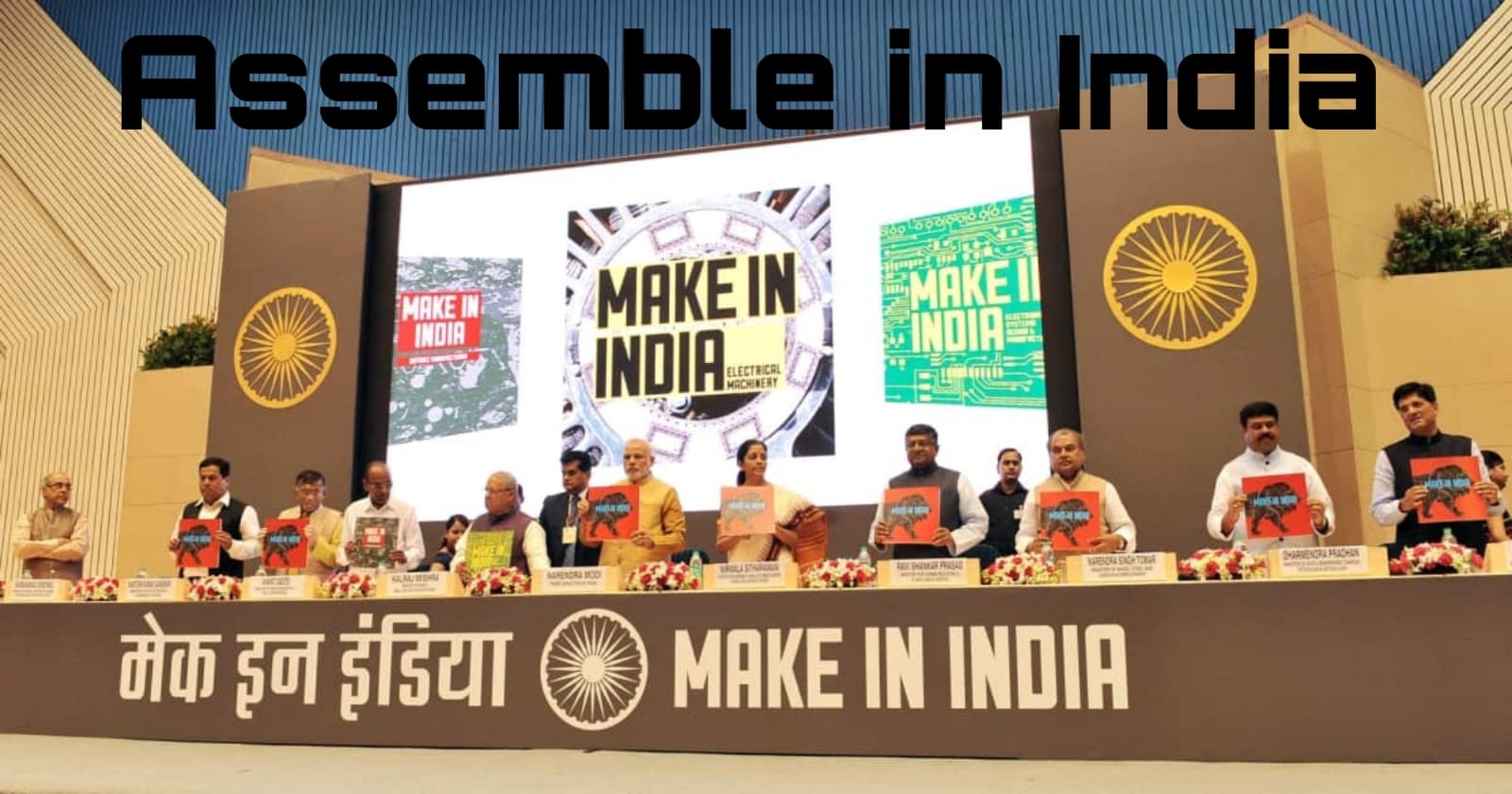Hello friends welcome to Sonu live ,in this article I’m going to tell you about Assemble In India Programme and Make In India initiative.
The “Assemble in India” program is a proposed initiative, often discussed as a potential extension of the existing “Make in India” program. While not an officially launched program yet, it is an idea that has gained traction as a way to boost India’s manufacturing and export capabilities.
Here’s how the two programs are connected:
Make in India:
- Launched in 2014, this national initiative aims to transform India into a global manufacturing hub, attracting foreign investment and creating jobs.
- It focuses on promoting local production across 25 key sectors, from automobiles and electronics to pharmaceuticals and tourism.
- Its goal is to boost domestic manufacturing, increase exports, and create skilled jobs.
Assemble in India:
- This proposed program builds on the foundation laid by Make in India.
- It specifically focuses on encouraging companies to assemble products within India, even if the components are manufactured elsewhere.
- This allows companies to take advantage of India’s skilled workforce and potentially benefit from incentives offered by the government, making assembled products more cost-competitive.
- Proponents argue that “Assemble in India” can:
- Create jobs: Similar to China’s early export strategy, it could generate employment opportunities, especially in labor-intensive industries.
- Boost exports: By assembling goods for the global market within India, it could increase India’s share of international trade.
- Develop skills and technology: Exposure to global production processes could enhance India’s technical expertise and attract further investment in manufacturing.
However, some potential challenges exist:
- Overreliance on assembly: Critics argue that focusing solely on assembly might not lead to true technological advancement. Or independent manufacturing capabilities.
- Dependence on imports: Heavy reliance on imported components could limit the economic benefit to India.
- Skill gap: India might need to invest heavily in skills development to ensure a workforce capable of handling complex assembly processes.
Overall, “Assemble in India” is still under discussion, but it presents a potential pathway for India to further its “Make in India” goals. By carefully considering both the benefits. And challenges, India can decide whether this approach can effectively contribute to its manufacturing and export ambitions.
I hope this clarifies the relationship between the two programs. If you’d like to know more about specific aspects of either program, feel free to ask.
READ MORE-https://sonulive.in/differentiate-between-start-up-and-stand-up-india/

